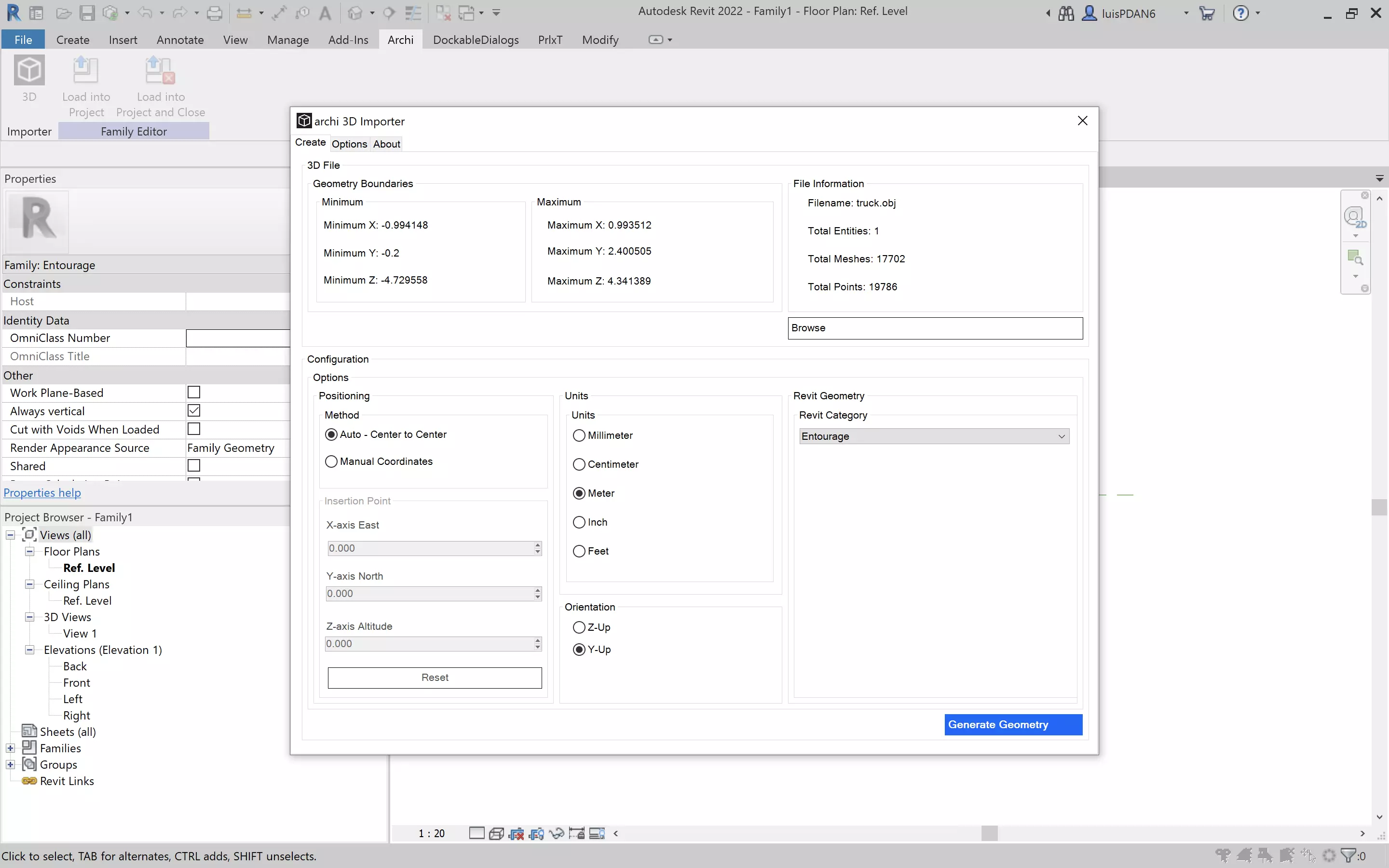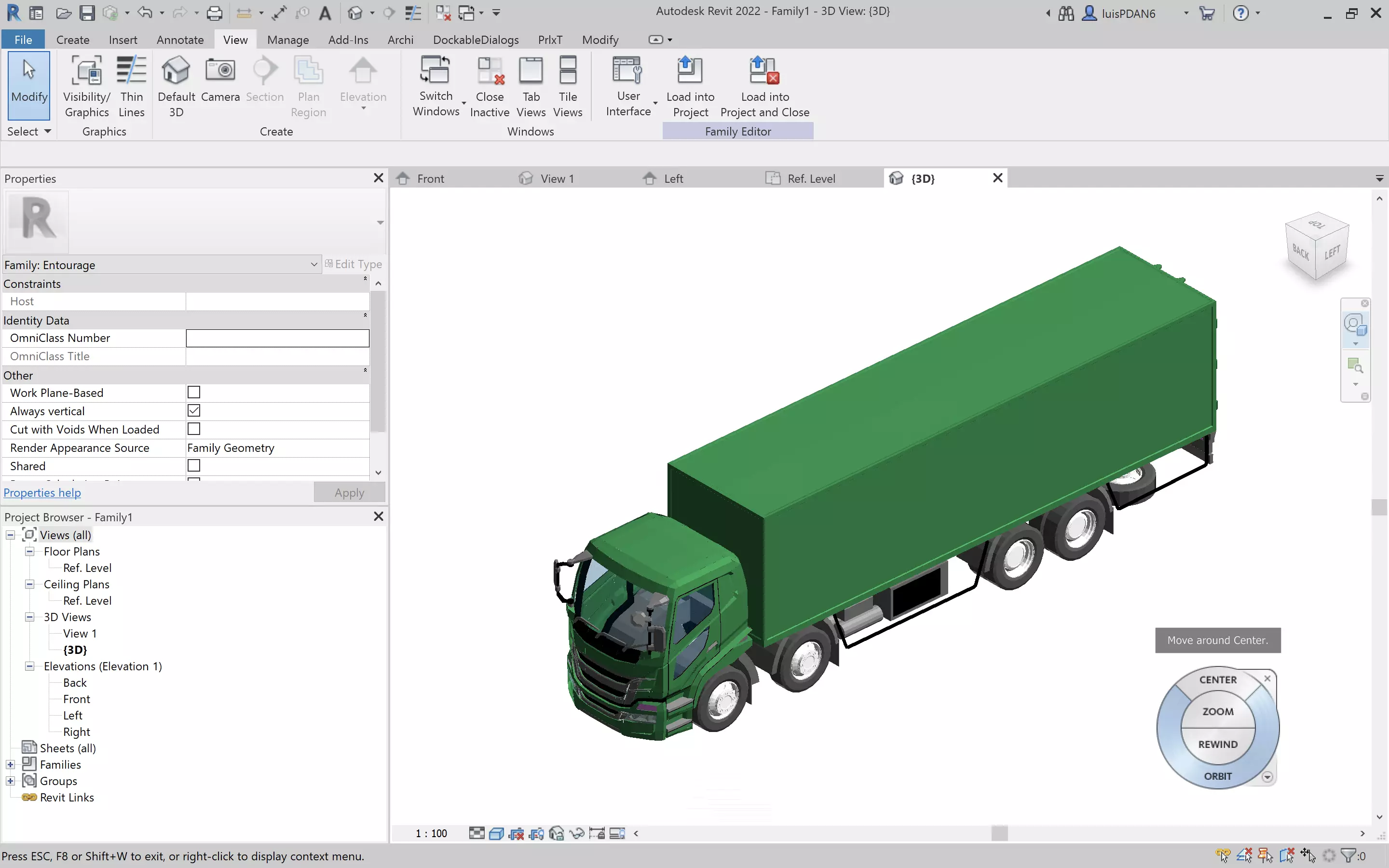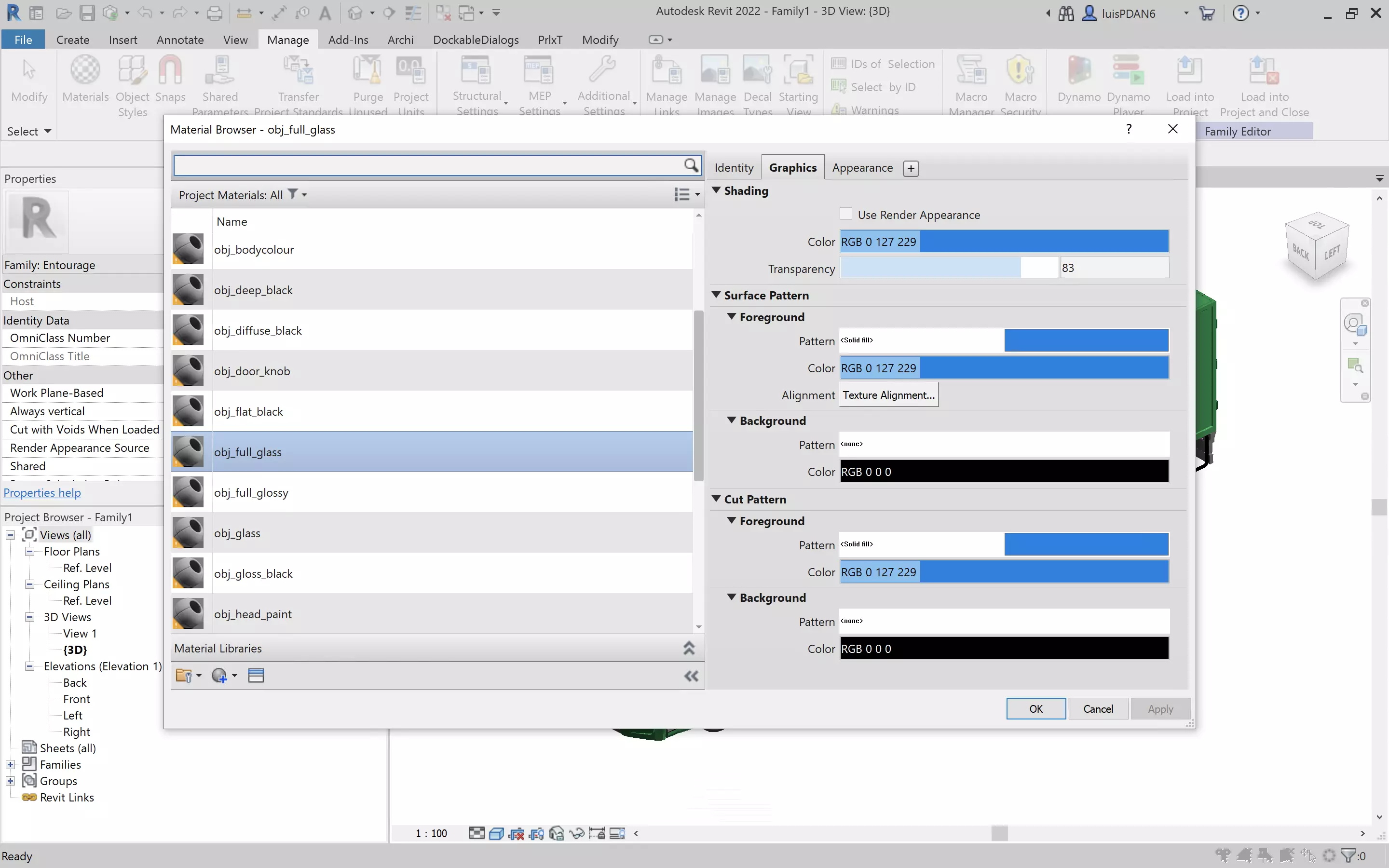Last updated on Sep 15, 2022.
Welcome to the Import 3D User Guide! Choose a topic below, get step-by-step instructions, and develop your skills.
Installation/Uninstallation
Install instructions
- Run the supplied installer
- Introduce the serial number in case you have a license
- Confirm the installation settings
- The plugin is now available to run inside Revit.
Uninstall instructions:
- Close all Revit sessions.
- Run the uninstaller from the installation directory or from the shortcut in the windows program menu.
- Confirm the uninstallation
- The program is then uninstalled.
General Usage Instructions
Import 3D allows to import geometry, colours and materials from supported filetypes into Revit documents. The import can be done into projects and families document types.
Loading a 3D file

To load an external 3D model follow the steps:
- Click on the Browse Button and select a supported filetype.
- Select a supported filetype.
- Click on the Open button.
Supported Filetypes
At the time this manual was written the following popular model exchange filetypes are supported:
- glTF
- Wavefront OBJ
- Collada DAE
We are currently adding supporting to newer exchange filetypes, that will be released soon. Please contact us should wonder about the current filetypes supported of if you have a ish of a new filetype.
Supported geometry types
The translation of external models currently supports solids and meshes with the following geometric elements:
- Triangles (OBJ, DAE)
- Polygons (OBJ, DAE)
- Polylists (DAE)
Translate the loaded model into Revit geometry
To translate the loaded model do the following.
- Adjust the positioning of the model. By default Center to Center is selected. The alternative is to choose the coordinate of one point in the imported model that should be positioned into the internal point of the Revit document.
- Adjust the units used of rthe import. Ensure that the units are not too small, otherwise Revit may be unable to generate the geometry.
- Click on the generate geometry button

Importing materials, colours and transparency.
By default the material names are imported and the geometry is sorted by the same materials like on the imported model. The color and transparency are also imported from the Wavefront models.
Adjusting materials
The imported materials are easily identifieable in the Revit materials browser, since they all share the same prefix. The imported materials from a OBJ file will have obj_ prefix for instance.

